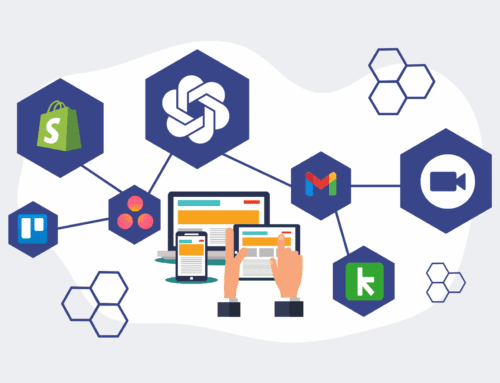How to Conduct a Needs Assessment for Implementing a New Resume Parsing System
Implementing a new resume parsing system is more than just selecting software; it’s a strategic investment that impacts your entire hiring workflow. Before you dive into vendor demos, a thorough needs assessment is crucial. This foundational step ensures your chosen system truly addresses your organization’s unique challenges, integrates seamlessly with existing tech, and delivers tangible ROI. Without it, you risk costly missteps and underutilized technology. This guide will walk you through the essential steps to conduct an effective needs assessment, ensuring your investment pays off.
Step 1: Define Your Strategic Objectives
Before evaluating any system, clearly articulate what success looks like. Are you aiming to reduce time-to-hire by 20%? Improve candidate data accuracy to minimize manual entry errors? Enhance candidate experience through faster application processing? Or perhaps improve compliance by standardizing data collection? These objectives must align with broader business goals, such as scaling recruitment efforts or reducing operational costs. By establishing precise, measurable goals, you create benchmarks against which potential solutions can be evaluated and ultimately demonstrate the return on investment. This clarity will guide every subsequent step of your assessment.
Step 2: Map Your Current Resume Parsing Workflow
Understanding your existing process is paramount to identifying inefficiencies. Document every step from when a resume is received (e.g., email, applicant tracking system, career site) to how its data is currently extracted, stored, and utilized. Note the tools involved, the personnel responsible, and the time taken for each task. Pinpoint bottlenecks, manual data entry points, and areas prone to human error or data loss. This comprehensive mapping will reveal critical pain points that a new system must resolve and highlight areas where automation can deliver the most significant impact, transforming tedious tasks into streamlined operations.
Step 3: Identify Stakeholders and Gather Requirements
A new resume parsing system affects various departments, not just HR. Engage all key stakeholders early in the process, including recruiters, hiring managers, HR administrators, IT professionals, and even legal/compliance officers. Conduct interviews, surveys, and workshops to gather their specific needs, frustrations with the current system, and desired functionalities. Recruiters might prioritize accuracy and speed, while IT might focus on integration capabilities and data security. Consolidating these diverse perspectives ensures that the chosen solution serves the needs of all users, fostering greater adoption and maximizing its overall value.
Step 4: Assess Technical Infrastructure and Integration Needs
A new resume parser rarely operates in isolation. It must integrate smoothly with your existing tech stack, which typically includes an Applicant Tracking System (ATS), CRM, HRIS, and potentially other communication or analytics platforms. Evaluate your current infrastructure for compatibility, API capabilities, and data exchange protocols. Determine what data points need to flow between systems and in which direction. Proactively identifying integration challenges and requirements will help narrow down vendor options and prevent costly custom development or workarounds post-implementation, ensuring a cohesive and efficient ecosystem.
Step 5: Evaluate Data Security, Compliance, and Privacy
Candidate data is sensitive, making security and compliance non-negotiable. Assess how potential systems handle data encryption, access controls, and data retention policies. Ensure the system adheres to relevant privacy regulations such as GDPR, CCPA, and any industry-specific mandates your organization must follow. Beyond external regulations, consider your internal data governance policies and how the new system will support them. A robust security and compliance framework protects your candidates’ privacy, mitigates legal risks, and upholds your organization’s reputation and ethical standards.
Step 6: Determine Budget and ROI Expectations
A needs assessment is incomplete without a clear understanding of financial parameters. Establish a realistic budget that encompasses not only licensing costs but also implementation, training, potential integration fees, and ongoing maintenance. Simultaneously, project the potential return on investment (ROI) by quantifying the benefits identified in Step 1, such as time savings, reduced errors, or improved candidate quality. This could translate into reduced hiring costs, increased recruiter productivity, or faster fulfillment of critical roles. A clear budget and ROI projection will justify the investment and ensure the chosen solution aligns with financial viability.
Step 7: Prioritize Needs and Develop an RFP/RFI
After gathering all data, synthesize your findings. Categorize requirements as “must-have,” “should-have,” and “nice-to-have.” This prioritization is crucial because no single system will likely meet every single desire. Use this prioritized list to develop a detailed Request for Proposal (RFP) or Request for Information (RFI) to send to potential vendors. The RFP/RFI should clearly outline your strategic objectives, workflow pain points, technical requirements, security needs, and expected ROI, allowing vendors to propose solutions specifically tailored to your identified needs. This structured approach streamlines vendor evaluation and ensures alignment with your organizational goals.
If you would like to read more, we recommend this article: 5 AI-Powered Resume Parsing Automations for Highly Efficient & Strategic Hiring









